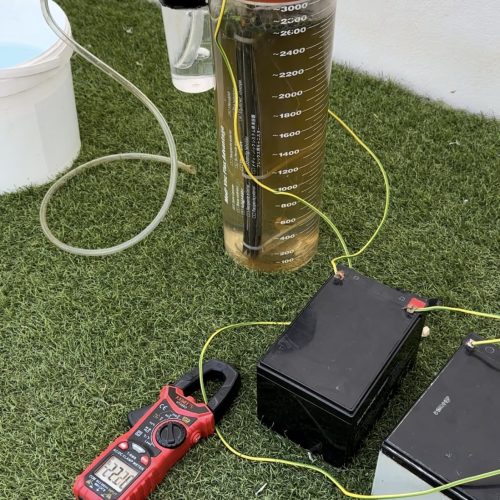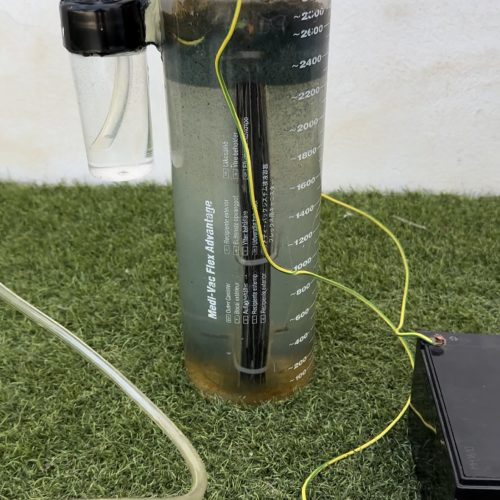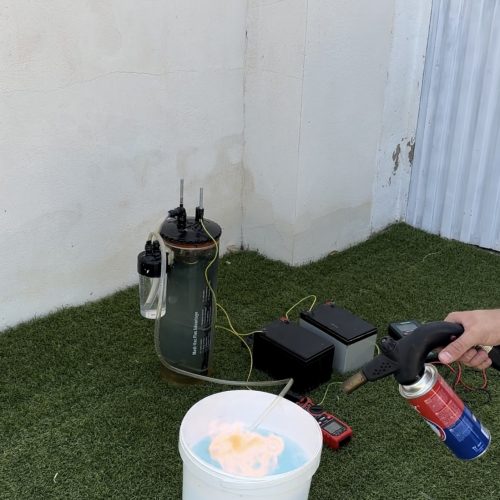HHO Generator
Generating exploding gas
Firefighters use water to extinguish flames—but what if water, one of the planet’s most abundant resources, could be turned into fuel? In this project, we explore how to easily convert water into a highly volatile gas using a simple process: electrolysis. This chemical reaction uses electricity to split water molecules into hydrogen and oxygen. Hydrogen is highly flammable, and oxygen is essential for combustion—together, they create a powerful gas known as HHO. When HHO ignites or explodes, it releases clean energy and produces only water as a byproduct.
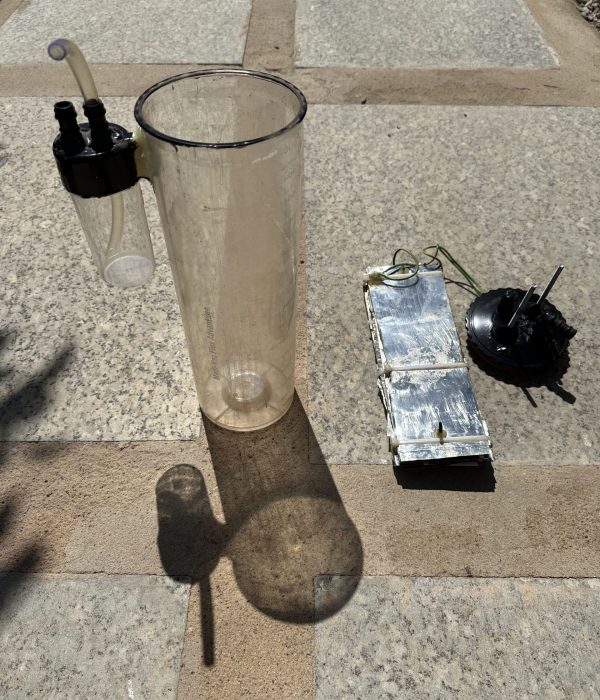

Specifications
– Only water as fuel
– Electrolizer with 8 inox steel electroedes
– 24V 24A power supply
Design and construction
Anyone can produce hydrogen at home using a battery and tap water. Oxygen will form at the battery’s positive terminal, and hydrogen at the negative. The challenge arises when scaling this up to an industrial level. In this project, we’ve designed an electrolyzer with 8 stainless steel plates spaced apart. One of the main issues with electrolyzers is the corrosion of the metal plates—despite being made of stainless steel, they degrade quite rapidly.
For the container, we used a 4-liter transparent vessel with a removable lid and two terminals that alternate connections to the 8 plates between positive and negative. The generated HHO gas rises to the top and exits through an outlet, then passes into a secondary safety container called a bubbler. This bubbler is designed to prevent any flames or explosions from traveling back through the hose into the main electrolyzer chamber.
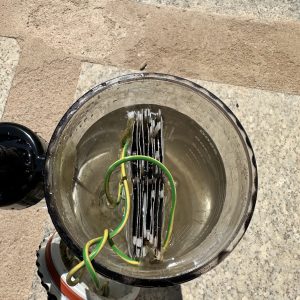
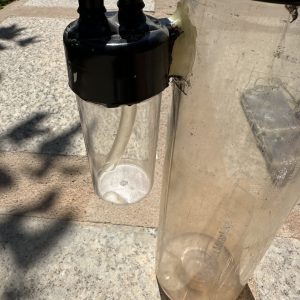
Test and results
The project was a success from the very beginning, with a steady and reliable production of hydrogen. To improve the water’s conductivity, regular table salt was added—significantly increasing the amount of hydrogen generated. The power supply consisted of two batteries connected in series, delivering 24V at a current draw of 23A, which is quite high. At this power level, the system produced approximately 1 liter of HHO gas per minute.
After several tests, the explosive potential of HHO was demonstrated by igniting it with a blowtorch. The results were impressive—the explosiveness of the HHO mixture is much greater than that of pure hydrogen, since it’s a pre-mixed gas containing both fuel (hydrogen) and oxidizer (oxygen).
